Featured Ingredient ~ Balsamic Vinegar & Our Tour Of The Antica Acetaia Cavedoni in Modena

On our recent trip to Emilia Romagna, we decided that we want to learn how Parmesan cheese, prosciutto, and balsamic vinegar are made. We visited the oldest acetaia (vinegar producing factory) in Modena, Antica Acetaia Cavedoni. It has been a family run factory since 1860, with five generations of this family learning the craft of making balsamic vinegar. Their production is a small one, but they choose quality over quantity and grow Lambrusco Grasparossa di Castelvetro, Trebbiano and Trebbiano Nostrano di Spagna; all native grapes for the production of Traditional Balsamic Vinegar of Modena DOP and IGP Balsamic vinegar of Modena on their small farm. On our tour, given by one of the Cavedoni sons who works daily in the acetaia, we learned how balsamic vinegar was made from the grapes harvested each fall, right through to the many years of aging it takes to produce each bottle.
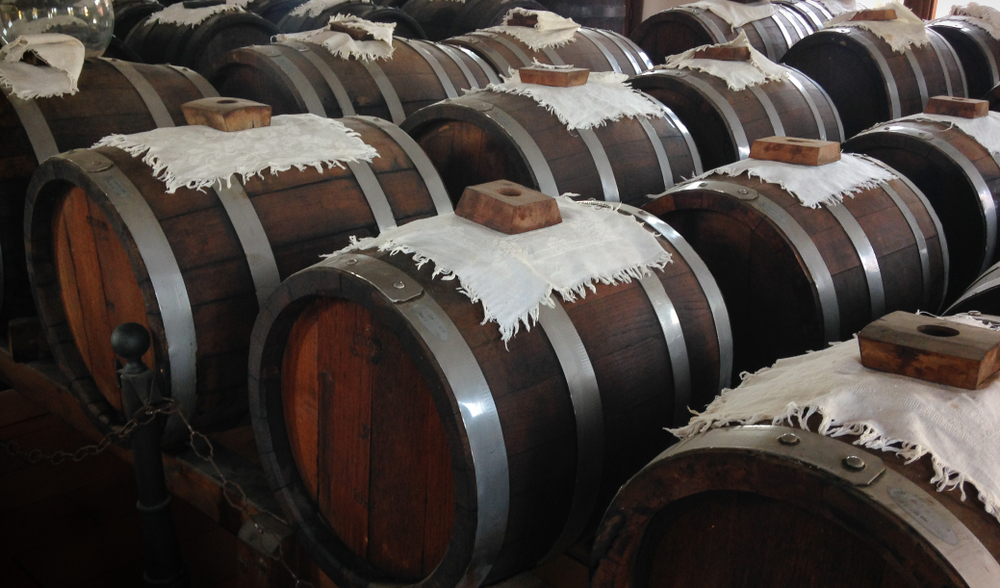 There are two types of balsamic vinegar, IGP, and DOP. IGP stands for Indicazione Geografica Protetta, or Protected Geographical Indication, while DOP stands for Denominazione di Origine Protetta. While both labels indicate a specific region where the ingredient is produced, DOP goes a step further than IGP, requiring strict regulations on how the ingredient is produced. The DOP label is a guarantee that the food was made by local farmers and artisans, using traditional methods. In fact, by law, only DOP products like balsamic vinegar can carry the word “traditional” on their labels, because they adhere to local traditions.
There are two types of balsamic vinegar, IGP, and DOP. IGP stands for Indicazione Geografica Protetta, or Protected Geographical Indication, while DOP stands for Denominazione di Origine Protetta. While both labels indicate a specific region where the ingredient is produced, DOP goes a step further than IGP, requiring strict regulations on how the ingredient is produced. The DOP label is a guarantee that the food was made by local farmers and artisans, using traditional methods. In fact, by law, only DOP products like balsamic vinegar can carry the word “traditional” on their labels, because they adhere to local traditions.
IGP is the basic balsamic vinegar that you can find on any grocery store shelf, and this type of vinegar is far less regulated. The vinegar only needs to be aged a minimum of sixty days, so large factories are producing this type of vinegar and add thickeners and some type of sugars to thicken and sweeten the vinegar to produce balsamic the way the consumer expects to find it. The Cavedoni family produces their IGP the natural way, and it contains only grape must and wine vinegar. They then age the IGP vinegar for 5 to 7 years, so the vinegar thickens and sweetens naturally. Although a little more expensive because of all the extra work involved, the Cavedoni IGP was amazing, and I enjoyed it so much that I bought two bottles. When buying basic IGP balsamic vinegar, check the back of the bottle and only buy brands that have just one or two ingredients with grape must being number one. If the vinegar is thick with just two ingredients, it has been naturally aged. This type of vinegar is going to cost more than the brands produced cheaply and quickly by huge companies, but the quality in my mind is worth it.
The other type of balsamic vinegar, Aceto Balsamico Tradizionale di Modena or Reggio DOP, is truly the champagne of vinegar and is strictly regulated. This vinegar has to be rigorously checked and tested before it is bottled, and they are so strict with the regulations that the acetaia cannot even bottle their own vinegar to ensure it is authentic. The consortium who tests the vinegar bottles it, and then sends the bottles back to the acetaia to label and sell it. Every bottle of this type of very regulated balsamic vinegar is bottled in the same bottle, a squat little bottle, no matter which acetaia produced it so the consumer can always know that it is an authentic aged balsamic. This Aceto Balsamico Tradizionale di Modena or Reggio DOP can be either 12 or 25 years old. Of course, if the acetaia has bottled vinegar that is 20 years old, you would not know that as it would be labeled that it is at least 12 years old. This vinegar can get very expensive, but it is used so sparingly, so one bottle should last years. Balsamic vinegar is often described as the champagne of vinegar, or as black gold. It has a richness that is sweet at the same time it is pungent. Its addition to any dish adds an earthiness that will enhance the fullness of the dish’s flavor.
True balsamic vinegar is made primarily in the region of Emilia-Reggiano in Italy, specifically in Modena and Reggio Emilia. It is produced in the same manner that wine is. Specific grapes are chosen, traditionally the white Trebbiano, which are crushed and pressed. This juice called mosto is then cooked down for a full day until it has concentrated and reduced in volume. It is then poured into wooden barrels, often oak or cherry, where it is aged for a minimum of 12 years. Throughout these years careful attention is taken to maintain the necessary conditions to produce the best product possible.When it has finished aging, balsamico as it is called in Italy should be thick, and syrupy in consistency, and have a complex, intense taste. Although the minimum length of time the vinegar is left to ferment is 12 years, many producers who follow the traditional methods, age some vinegar for many decades. Of course, as you would imagine, the older the balsamico, the more intense the flavor, and the higher the price. I have two bottles of the artisan-style balsamic, one 25, and one 40 years old, which of course I use in moderation, just a few drops at a time.
Balsamic vinegar has a long history in Italy, with the first written documentation referring to balsamic vinegar dating back to the 11th century. At that time, a reference was made to balsamic vinegar having been given as a present to the King of Franconia. At that time, it is interesting to note, that not only was it used in cooking but balsamico was also taken as a tonic and in medicinal concoctions.
 When buying balsamic vinegar, look for Aceto Balsamico Tradizionale di Modena or Reggio DOP. This would be the true artisan-style vinegar, the best you can buy. The other type, Aceto Balsamico di Modena IGP is often an industrially made product, and its quality may vary. If the label states it was indeed made in Modena; however, it may be worth trying. In the States, the best source for artisan-style balsamic would be a good Italian specialty store. This delicious imported Italian condiment can be found these days in almost any quality grocery store. On our recent balsamic tour in Modena, the owner of the acetaiBalsamic vinegar is best stored in a cool, dark place, although it is fairly stable, and once bottled will retain it’s flavor well. When used in recipes, the traditional aged type is used sparingly, never actually cooked, but added just before serving to give a burst of flavor. I often add a few drops of balsamico to sauteed mushrooms, or veal and beef dishes just before serving which adds a delicious earthy richness. Another great use for aged balsamic is to drizzle it on fruit, or on wedges of parmesan cheese. Also, a neat trick I learned many years ago helps to improve the flavor of strawberries. If the strawberries you buy are slightly under-ripe, after you clean them, toss them with a half a teaspoon to a teaspoon of balsamic vinegar and a teaspoon of sugar. You will be amazed at the change in flavor! Delicious!
When buying balsamic vinegar, look for Aceto Balsamico Tradizionale di Modena or Reggio DOP. This would be the true artisan-style vinegar, the best you can buy. The other type, Aceto Balsamico di Modena IGP is often an industrially made product, and its quality may vary. If the label states it was indeed made in Modena; however, it may be worth trying. In the States, the best source for artisan-style balsamic would be a good Italian specialty store. This delicious imported Italian condiment can be found these days in almost any quality grocery store. On our recent balsamic tour in Modena, the owner of the acetaiBalsamic vinegar is best stored in a cool, dark place, although it is fairly stable, and once bottled will retain it’s flavor well. When used in recipes, the traditional aged type is used sparingly, never actually cooked, but added just before serving to give a burst of flavor. I often add a few drops of balsamico to sauteed mushrooms, or veal and beef dishes just before serving which adds a delicious earthy richness. Another great use for aged balsamic is to drizzle it on fruit, or on wedges of parmesan cheese. Also, a neat trick I learned many years ago helps to improve the flavor of strawberries. If the strawberries you buy are slightly under-ripe, after you clean them, toss them with a half a teaspoon to a teaspoon of balsamic vinegar and a teaspoon of sugar. You will be amazed at the change in flavor! Delicious!
In general for use in salads, cooking, pasta, or drizzled over meats before grilling, use the Aceto Balsamico di Modena, the IGP version. I would save the traditional, aged balsamic to be used as a condiment, a drop at a time just before serving. Remember though, when using balsamic vinegar in your recipes, use just enough to enhance, not overpower the flavor of the dish. If you aren’t too familiar with this type of vinegar, also called black gold, I do hope you will now be encouraged to try balsamic vinegar in your own kitchen.
We thoroughly enjoyed our balsamic vinegar tour at the Cavedoni acetaia, and the son’s passion for producing this quality vinegar was undeniable. After learning how much work is involved in producing every single bottle of Aceto Balsamico Tradizionale di Modena DOP, I now fully understand just why it is so expensive. We had a lovely tasting after our tour tasting all the products that the family produces including their IGP and DOP balsamic vinegar, their Lambrusco wine, and their saba, a lovely condiment that is used often in a dessert. If you ever venture to Emilia Romagna, I suggest that you tour a balsamic vinegar factory, and would highly recommend the Acetaia Cavedoni. The family was lovely, and it was so interesting to learn how this family has made such high-quality balsamic vinegar for the past five generations.
Azienda Agricola Antica Acetaia Cavedoni dal 1860 – Via Guerro di Qua, 2 – 41014 Castelvetro (MO)
ItalyCell. +39 339 4317980 – Fax + 39 059 790645
Email

These Barrels Contain Balsamic Vinegar That Is Over 150 Years Old
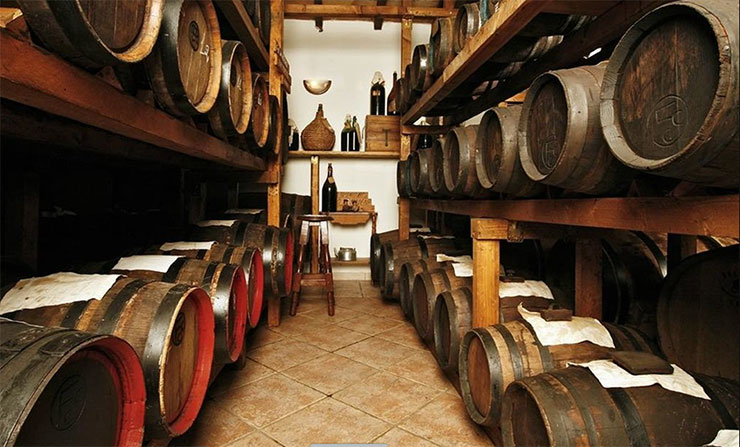
Aging Barrels
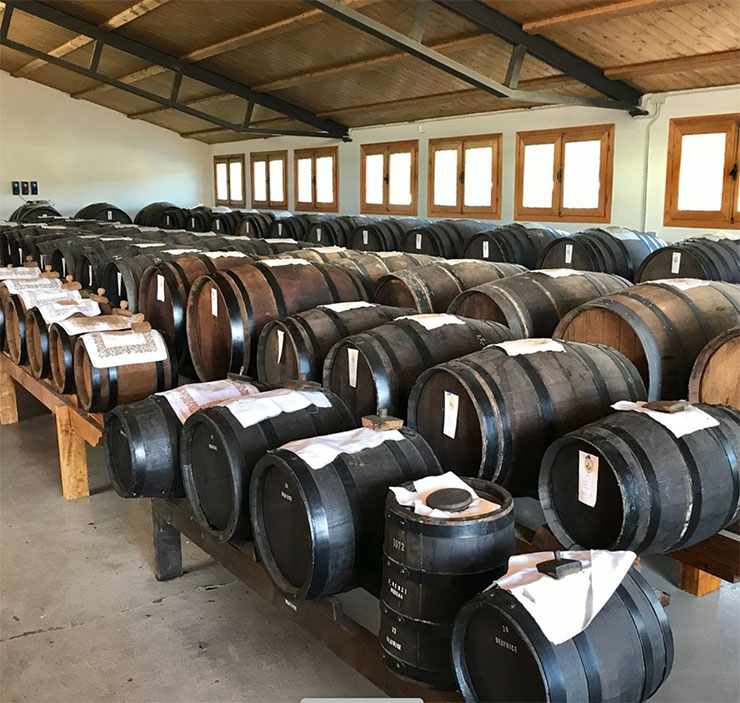
The Acetaia – Each Row of 5 Barrels is Often Made From Different Types Of Wood – The Darker The Barrels, The Older The Vinegar Is Inside.
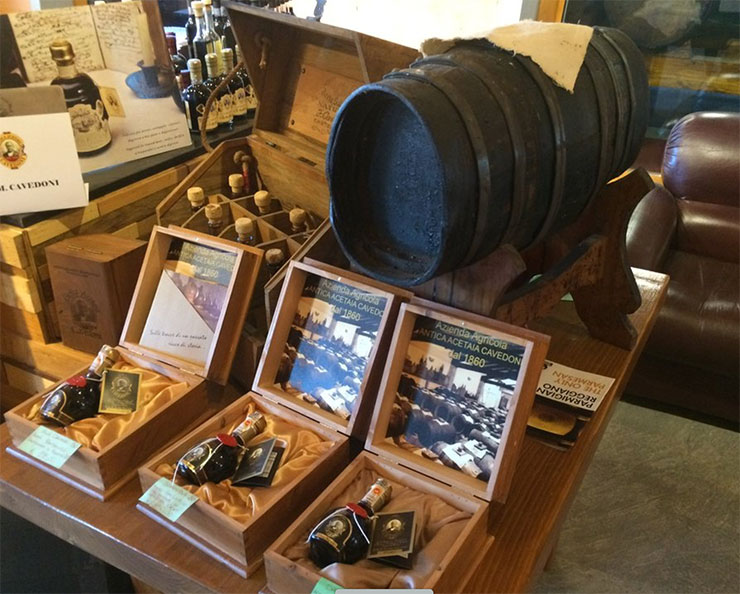
Products Produced By The Cavedoni Family

Explaining How The Balsamic Vinegar Is Aged And How It Is Moved From Barrel To Barrel
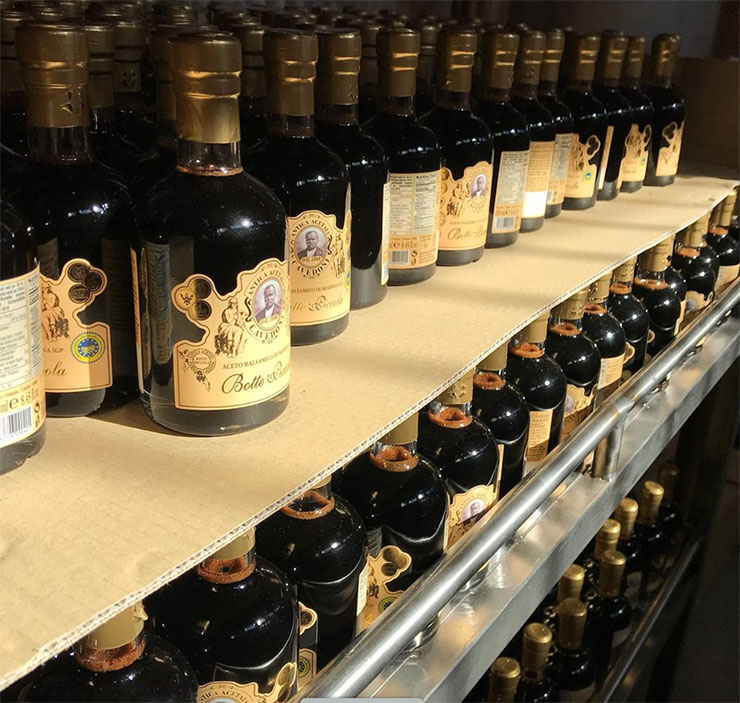
The Cavedoni Balsamic IGP
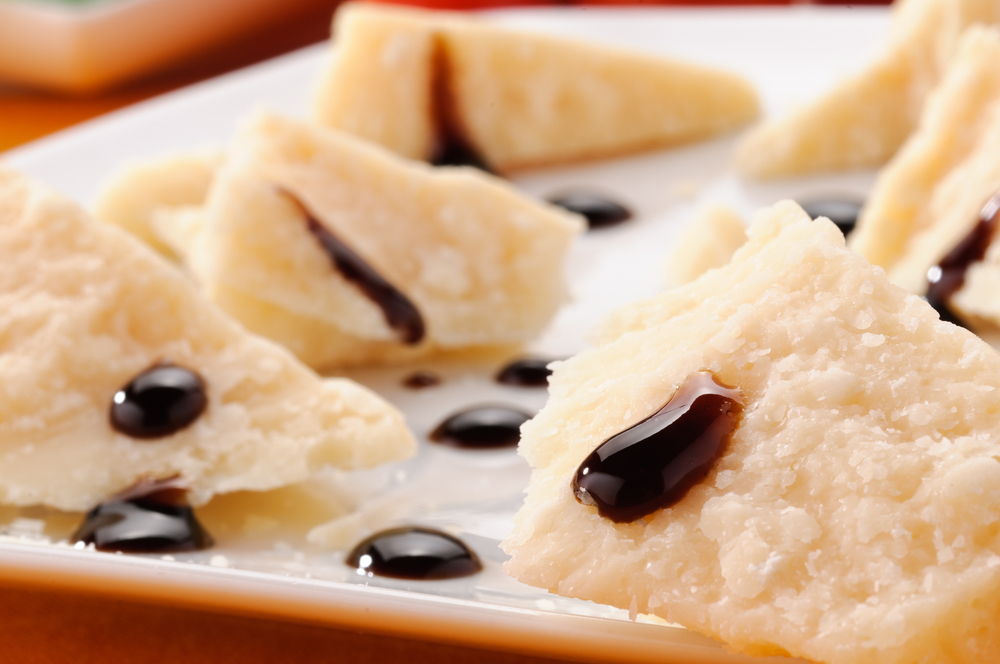
My Favorite Way To EnjoyAceto Balsamico Tradizionale di Modena DOP
Deborah Mele 2019
It’s an absolutely amazing product isn’t it!! It goes with so many dishes including straight onto strawberries, beetroot and amazingly with soy sauce and sushi!
Learning from pages like yours just make the food taste even better and we had a tour last year with Angelo of Food n Wine tours in Parma (www.foodnwalktours.com) and we ended up sipping this wonderful elixir!! Great article. Complimenti!! Nick